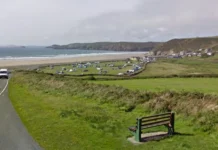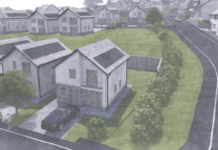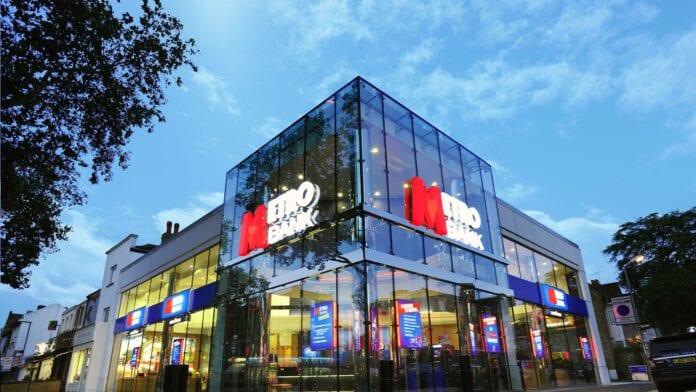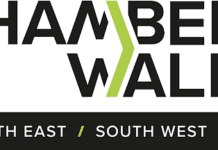IS THIS THE BLUEPRINT FOR THE FUTURE HIGH STREET?
– Metro Bank partners with futurist to predict what the high st and community of tomorrow could look like –
A micro-hospital nestled next to an AI-powered grocers, a tiny factory making local goods next door to a drone-delivering neighbourhood florist, a cinema showing films made round the block rather than Hollywood blockbusters and shops where everybody knows your name: according to a leading futurist, these are just some of the features of the ideal high street and community of tomorrow – and 90% of Britons can’t wait to see them become a reality.
Britain’s community bank, Metro Bank commissioned leading Consumer Futurist, Will Higham to develop a blueprint for the high street and community of 2040.
Far from the vision of a detached, tech-driven world devoid of social interaction, Higham’s blueprint suggests that the nation’s strong desire for face-to-face contact and putting the ‘local’ back into local communities (both accelerated by the pandemic), will see the emergence of completely new kinds of micro high streets and hyper-local neighbourhoods, with technology playing a role in driving more face-to-face opportunities, not less.
10 features from the Blueprint for the High St and Community of the Future:
- Shopkeepers – aided by technology – will know every customer by sight, including their full name, in order to provide a more personalised experience. Artificial Intelligence will also enable shopkeepers to keep an inventory of everything their customers do and want, to help them provide a genuine ‘personal service’.
- Many high street shops selling local products will adopt drone deliveries to residents and other businesses.
- Advances in 3D printing will enable each high st to have its own micro-factories and workshops. This will enable better local production, providing quick access to more products for those outside of the main urban centres, and shorten haulage routes.
- In the past we might have seen one hospital cover multiple neighbourhoods, but tomorrow’s hyper-local communities will include micro-hospitals on the high street: GP’s offices that are expanded to include beds and even surgery space, alongside consulting rooms for local osteopaths and acupuncturists.
- Micro-cinemas will also open on the high street. Like the smallest screens in cineplexes, they’ll only show films chosen by local residents, or even filmed by locals. Some citizens may even open ‘cottage cinemas’ and charge people to watch the latest film in their state of the art home cinema set-up.
- Many high streets will have their own currency – or local vouchers – and offer discounts to those showing local ‘passports’. It’s a trend that’s starting to spread, from the Brixton Pound to the Bristol Pound.
- High streets will have their own distinct commercial theme, attracting relevant services to the area: one may be a thriving hub for jewellery, another for cycling and cycling gear. This is something that was common a few hundred years ago, as can be seen by surviving street names, from Threadneedle Street to Sadlers Yard.
- Every high street will be car-free and fully pedestrianised. Autonomous cars will pick visitors up from their homes and drop them off at the edge of the high street. Then they’ll head off to pick up others or wait for their passengers in new people-free ‘dark car parks’ underground.
- The high street will house more neighbourhood co-op schemes: from creches to volunteer-run micro-tourism offices that sing the praises of the nearby streets and citizen-run estate agents. Some will be housed in stand-alone buildings: others in existing shops, cafes or banks.
- Future high streets will cater to a community borrowing and bartering trend. We’ll see more ‘time banks’, there’ll be product libraries where residents can borrow specialist and big ticket items, and citizen-run toy, book and magazine libraries where no-longer wanted items are donated, borrowed and swapped will exist.
The full report outlining the future high st and local community can be read here: https://www.metrobankonline.co.uk/about-us/research/back-to-the-future/
Leading Consumer Futurist Will Higham comments, “Britons’ renewed love of community is one of the biggest trends we’ve seen in the last ten years, especially with the boost it’s been given by lockdown. And anxiety around our globalised world is making Britons look back at the way communities used to live with renewed interest. That’s true of young and old alike.
“Check out how well vinyl records and board games are selling with Gen Z. It’s not a luddite rejection of technology though. As the report shows, innovations like AI and e-commerce can actually help bring communities closer together. Building a bright future for the local high street will be about combining the best of the present with the best from centuries past.”
Metro Bank also commissioned research with the public to understand if the features of the future high street would be welcome. Surprisingly, from a generation who spend a vast amount of time interacting via technology, over half (61%) of 16-24 year olds reveal they would like stores to know their name. 67% of those over the age of 55 would also like to be on first name terms with more of their local stores and like the idea of a community-first high street.
Over 90% of Brits (one in four (83%) 16-24 year olds) think the world would be a nicer place if there were more face-to-face interactions, with almost half (49%) saying lockdown has made them take more interest in their local community. One in five (20%) now volunteer in their local area and 66% are open to start contributing their skills and free time to help others.
Kat Robinson, customer experience director from Metro Bank adds, “Community has always been at the heart of Metro Bank so it’s very reassuring to see that the future of the high street is going to be very much centred around just that. The fact that nine out of ten Britons want more face to face interactions reflects what we see every day in our business – customers want a real person to talk to – especially when they are making big decisions about key moments in their life such as taking out their first mortgage.
“It appears we’ve already taken steps in the right direction by supporting small start-ups and entrepreneurs and by having business managers at each of our stores who are solely focussed on helping local businesses. We also let business customers use the store’s meeting facilities, free of charge.”
The report findings prove that even with technology driving a lot of what’s to come in the future, it’s people who shape our local communities. People form the bedrock of our business and we’re committed to ensuring that remains the case for decades to come.”
Help keep news FREE for our readers
Supporting your local community newspaper/online news outlet is crucial now more than ever. If you believe in independent journalism, then consider making a valuable contribution by making a one-time or monthly donation. We operate in rural areas where providing unbiased news can be challenging. Read More About Supporting The West Wales Chronicle
























